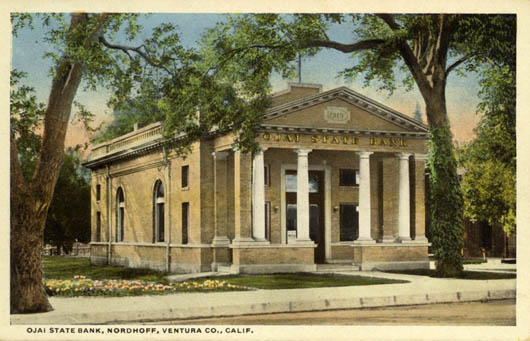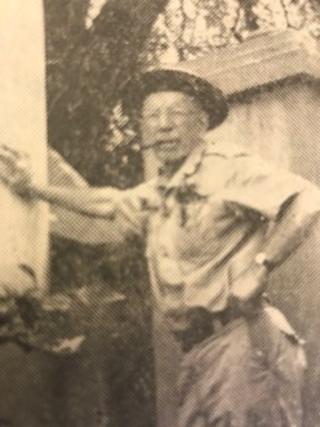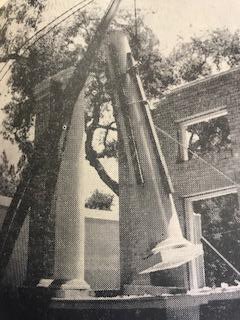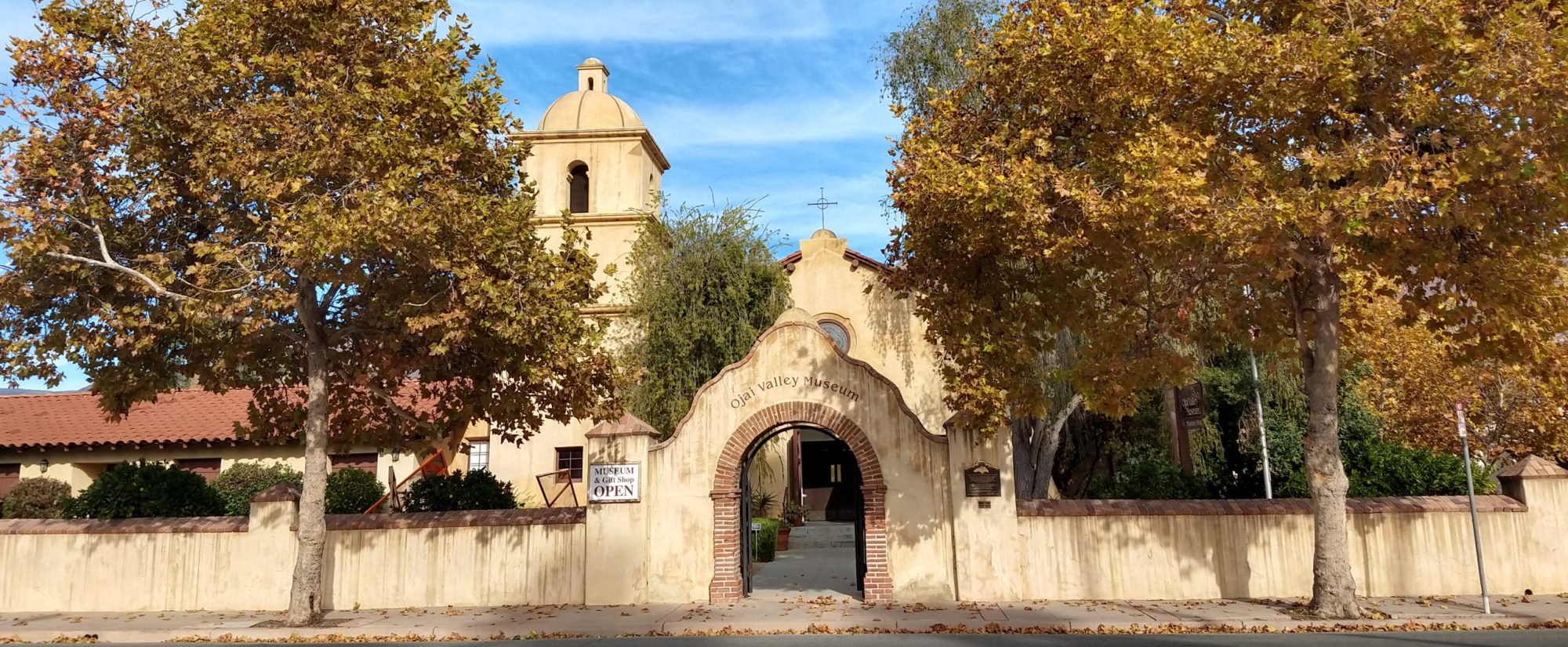The following article was first printed on the front page of the Thursday, June 16, 1960 edition of “THE OJAI PRESS”. “THE OJAI PRESS” became part of the “OJAI VALLEY NEWS”. It is reprinted here with their permission. The author is unknown. The color photo of the “OJAI STATE BANK” was added to this article by the “Ojai Valley Museum”.
MAJOR JOHN DRON WINS ROUND WITH PILLARS
The Paul Bunyan of the Ojai has done it again! This time Major John Dron has been involved with a day long tussel with the one ton pillars which have long graced the front of the former Bank of America building in downtown Ojai.
Not letting board meetings, limbs of trees, or electrical wires stand in his way Major Dron personally hired the Chuck Major construction company in his “project save the pillars,” and overcame all obstacles, personally seeing the pillars safely stored by the garden gate before retiring to begin a scale drawing, showing the way his “Classic Doric” pillars, will grace the historic “Basic Baroque” Nordhoff Memorial fountain when he undertakes to move it block by block back to its original resting place, about, 30 feet inside the park.
His plan, subject to the approval of the Libbey estate Civic association board, headed by Charles T. Butler, includes the re-activating of the fountain, with water to spew from the lion’s mouth over the existing basin and into a pool of ferns, the pillars, to be covered by wisteria will form a pergola around the fountain. He hopes to persuade the Ojai Valley Garden club to continue to care for planters in the watering trough, or street side of the fountain.
Though he has underwritten the start of the project with his own funds, he hopes Ojai Valley residents will raise the required fund through subscriptions when the board approves the project. He reminds that donations to the historic seven acre park in the heart of Ojai, are “tax deductible.”
He called the moving of the one ton pillars “nothing” compared with the project moving the fountain yet to come. “The blocks will have to come out one by one, and be numbered, in order to put back together properly.”




